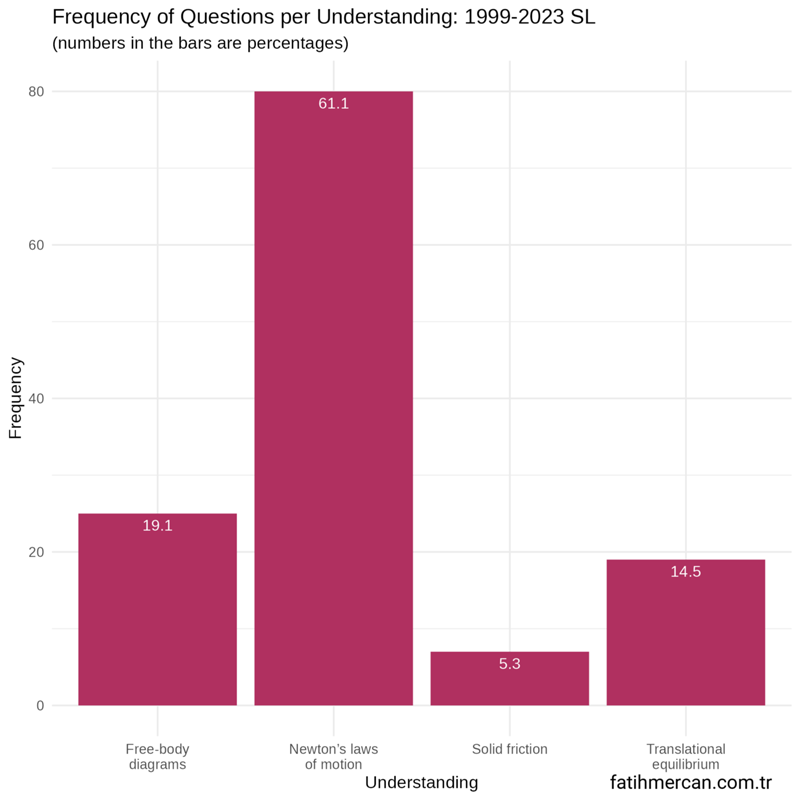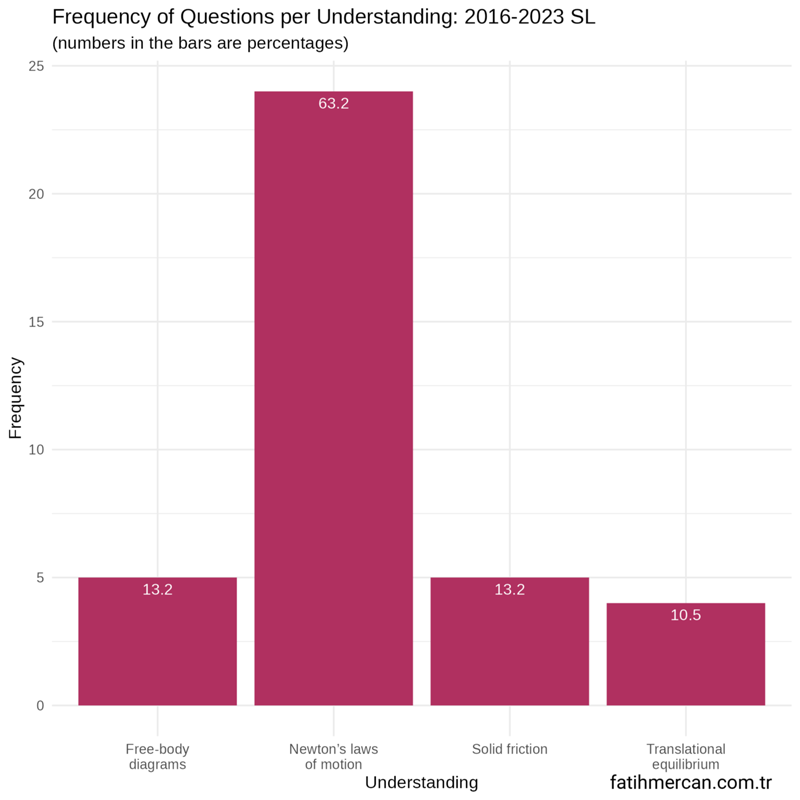In IB Physics First Assessment 2016, forces is a subtopic of Topic 2 mechanics. This subtopic has the following understandings associated with it.
- Objects as point particles
- Free-body diagrams
- Translational equilibrium
- Newton’s laws of motion
- Solid friction
In this part of the analysis, I am particularly interested in “What is the frequency distribution of the questions concerning forces understandings?”
Frequency distribution of questions by forces understandings for HL
Between 1999-2023
For the entire dataset for HL, about two-thirds of the questions were from Newton’s laws of motion and solid friction. Free-body diagrams and translational equilibrium accounted for the remaining one-third of the questions.

Figure 1
Between 2016-2023
The distribution is almost identical between these years with the entire dataset.

Figure 2
Frequency distribution of questions by forces understandings for SL
Between 1999-2023
For the entire dataset for SL, Newton’s laws of motion were heavily assessed under the subtopic forces, with almost two-thirds of questions coming from this understanding. Solid friction is assessed rarely.

Figure 3
Between 2016-2023
Between these years, Newton’s laws of motion again appeared to be the most heavily assessed understanding. One difference from the entire dataset is the remaining three understandings are equally frequently assessed.

Figure 4
Where to go from here?
You may want to check out the other related subtopics:
If you are interested in more detailed analyses of the topics:
- Measurement and uncertainties
- Mechanics
- Thermal physics
- Waves
- Electricity and magnetism
- Circular motion and gravitation
- Atomic, nuclear and particle physics
- Energy production
- Wave phenomena
- Fields
- Electromagnetic induction
- Quantum and nuclear physics
This work/product/service has been developed independently from and is not endorsed by the International Baccalaureate Organization. International Baccalaureate, Baccalauréat International, Bachillerato Internacional and IB are registered trademarks owned by the International Baccalaureate Organization.
